Intern Weekly Response: Podcast Nation 2019

Every week we’re asking our summer interns to share some thoughts and responses to various experiences and readings. This week we asked them to read both Podcasting In 2019: An Introduction for Museums and Tasting Together: Podcasts And Meaningful Community Engagement, then select a museum-related podcast and share their reviews, in preparation for creating their own podcast episodes later in the summer. To read more posts from JMM interns, past and present, click here.
Podcast: SpyCast from the International Spy Museum
~Intern Megan Orbach
After reading Podcasting in 2019: An introduction for Museums and Tasting Together: Podcasts And Meaningful Community Engagement and listening to a couple SpyCast podcast episodes, I found myself deep in a world I have never been in but am newly very interested in. Firstly, I have not explored the world of podcasts way too much yet and seeing the plethora of podcasts that exist solely in the museum world was very eye opening for me.
The first thing that I realized was that podcasts are a unique way to reach an audience, especially in that one can listen to them almost anywhere, even in the car on the way to work. Further, they are perfect for those who are less visually inclined but are stronger audibly.
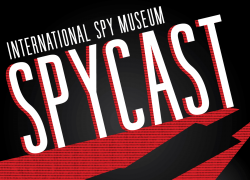
The podcast I listened to is run by the International Spy Museum of Washington D.C. Their unique subject matters made it both fascinating and difficult to relate to the initial reading I did.
The first episode I listened to was about an organization called Hostage UK & US. The episode tells the story of this international organization that works to help the families of hostages who are, of course, impacted by their family members’ captivities. I found it intriguing how and why the Spy Museum chose this topic to discuss on their podcast. Throughout the episode I understood that the museum seems to do a lot of work pertaining to counter-terrorism and may have chosen this subject because it, many times, overlaps with hostage situations. Further, I also enjoyed how they were telling the story of the operation with the founder in the room; it made for a much more contextually accurate and descriptive story.
The second episode I listened to was about “An American’s Path to Al-Qa’ida”. It detailed the story of a non-Muslim American who decided to convert into Islam and eventually ended up joining Al-Qa’ida. It was extremely interesting to listen to as it is certainly not an ‘every-day’ type of story. This story also relates to counterterrorism which is likely why the museum was interested in it as well.
In both episodes, I liked how the host/interviewer in the podcast was present but really allowed the guest to tell their stories, and made sure to ask questions that guided the guest instead of choosing topics or speaking points for them. More than that, I liked how the episodes didn’t seem too edited and filtered; it was very raw and true to the actual recording.
I believe the relation between the Spy Museum’s podcasts and the reading about the food podcast is that they both are in existence and were made to tell stories and to allow voices to be heard, potentially also serving as the only platform some are able to or asked to speak on.
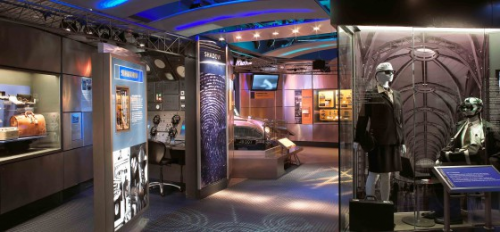
Podcast: Art Palace from the Cincinnati Art Museum
~Intern Mallory Connaughton
Podcasts are a great way to engage people who may not know a lot about a topic, or who may be unable to have access to certain materials. For museums, podcasts can provide outreach to those out of the area, showcasing what the museum may have. But it also provides museums with a new way to tell the stories of the various artifacts. It can be challenging to start a podcast, as some of our weekly reading pointed out, but once the first few episodes are out it can become incredibly natural and fluid to produce.
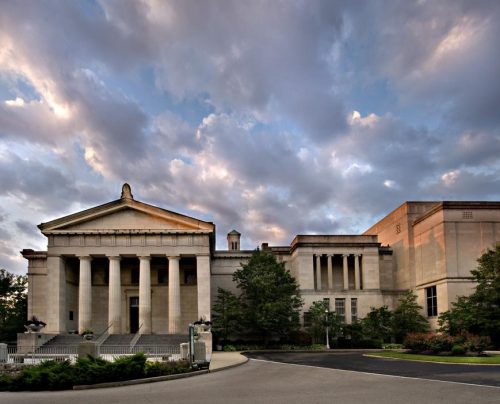
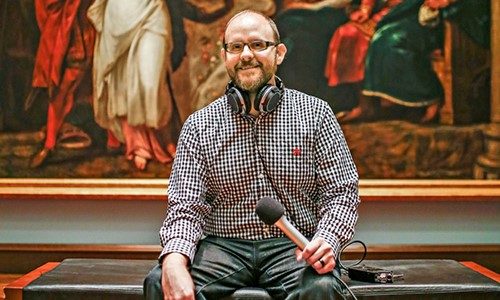
Every episode also has a guest. The first half of the episode involves talking to the guest, the second half has the podcast has them walking through the museum, looking at and discussing an exhibit that Russell picked out in advance.
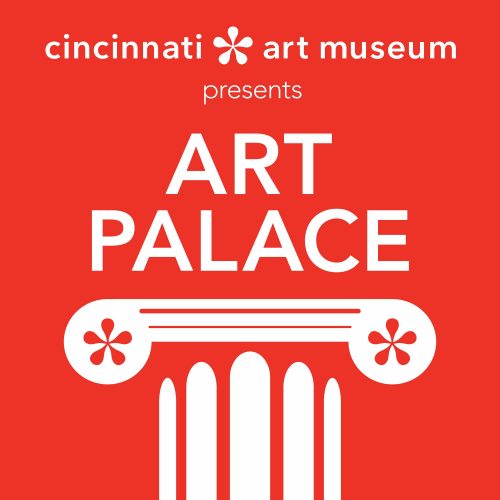
The podcast not only discusses pieces featured in the museum, but it also involves talking to the guests about their jobs, feelings and opinions on the topics brought up. Guests are mostly from outside the museum, although in some episodes there are other members of the museum present as the guest. Across the episodes, the listener slowly learns more about the various pieces and exhibits within the Cincinnati Art Museum.
Personally, I love podcasts. I listen to a lot of podcasts, all discussing different topics and some focusing more on stories then facts and history. One of the things I love the most about podcasts is how they can approach knowledge heavy topics and deliver them in a fun narrative way – while still educating the listener. But before this, I didn’t really listen to podcasts produced by museums. Through this project I have found several podcasts that I’ve added to my ever-growing list to listen to. But “Art Palace” really stood out to me. To start, I’ve always loved art museums and art history has been a hobby of mine – especially through college. But “Art Palace” also has an interesting dynamic, with the host and the new guests every episode. It provides the listener with not just a fun new interaction, but also with someone who the selected exhibit was picked for – which provides a new type on insight to the topics discusses, not just people who specialize in art.
Museums benefit from podcasts. As someone current in school with little to no time to travel, hearing about the exhibits and unique features of different museums makes me look more into the specific museums and their exhibits, curious to visit. Podcasts are still a very new platform, although it has a huge fan base – which is still strongly growing. But the way that podcasts can engage such a broad and vast audience and bring new information to those who don’t have direct access is amazing, and the industry is just going to keep growing.
Podcast: Museopunks from the American Alliance of Museums
~Intern Elana Neher
The podcast that I listened to for this week’s response was a podcast that I have listened to on and off for a few years now, Museopunks. The show was started in 2013 by Suse Anderson, an assistant professor of Museum Studies at The George Washington University and Baltimore resident, and Jeffrey Inscho, the former Web and Digital Media Manager at the Carnegie Museum of Art. Inscho has since left the museum sector and the podcast. Museopunks is produced by The American Alliance of Museums.
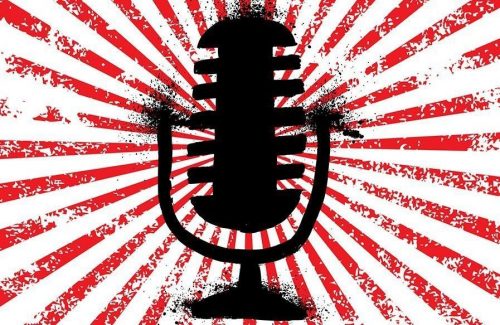
As a student who spends much of her class time studying museums and discussing similar issues, this podcast feels like sitting at discussion panel or in a seminar class with some of the most educated, experienced, and innovative people in the museum world. I felt engaged for the entire hour listening to the different perspectives of the museum professionals, but I also felt like I was a part of the conversation. A discussion panel at a conference puts people up on a stage, separate from the audience, but this podcast feels much more intimate.
The format of a conversation within a group allows Anderson to select a wide range of guests with interesting and different perspectives on the topics that will be discussed within the episode. Anderson’s selection of guests lends itself to interesting conversations that both the listener and guests themselves can learn from. In each episode, guests brought up facets to each topic that I had never considered and, after each episode, I felt like my knowledge on the topic had broadened and my opinion about the issue had become more informed.
Podcasts: Museums in Strange Places from Hannah Hethmon and Museums of Lost Objects from BBC Radio 4.
Intern Ariella Shua
According to the two articles we read this week, podcasts are the perfect fit for museums. Hannah Hethmon and Ian Elsner, who both run museum-focused podcast series, wrote Podcasting in 2019: An Introduction for Museums. They provided a guide for the inexperienced and curious: they know that this works. The Jewish Museum and Archives of BC (JMABC), a Canadian institution, wrote about their successes with trying the new medium out. They found that by making their podcast recordings part of a larger community-focused initiative, they were able to increase interest in JMABC programs and their own Oral History Collection.
Edison Research reports that over 44% of Americans have listened to a podcast. And that number keeps growing, year by year. If that’s the case, Hethmon and Elsner say, then museums who want to stay relevant need to become part of the trend. They need to choose a niche topic that relates to their institution, use a hook that makes it sustainable over a number of episodes, and put in the work — often inexpensive, but time-consuming — for a good product. JMABC, only staffed by 3 full-time workers, was able to do it. And Hethmon’s website lists dozens of other museums and non-profits that have also stepped into the world of podcasting.
After reading the two articles, I decided to venture into the world of museum podcasts. I wasn’t going to be a producer, but a listener: the audience that all podcasts desperately crave.
I decided to listen to a few episodes of “Museum of Lost Objects.” The podcast primarily focuses on ancient Iraqi and Syrian artifacts that have been destroyed or ruined. 18 episodes were released between February 2016 and July 2017.
I should mention that I’m not a dedicated podcast listener. I have tried out a few over the last year. However, I tended to want a visual medium for extra context or let my mind wander and missed half of the episodes. The one exception came when I listened to Hethmon’s Museums in Strange Places episode on the Sandy Spring Museum in Maryland. A class I was in had visited the museum and then listened to the episode afterwards. My familiarity with the museum helped keep me interested in the behind-the-scenes information.
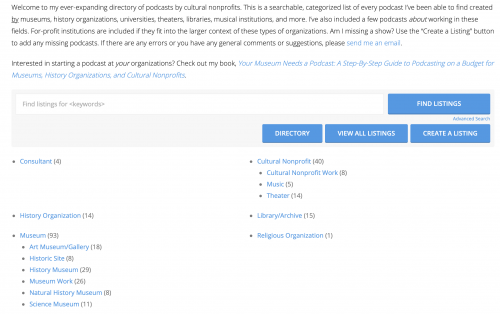
I chose Museums of Lost Objects, despite not knowing the lost objects, simply because I was intrigued by the subject. Near Eastern archaeology and history always draw me in. I listened to several episodes: “The Winged-Bull of Nineveh;” “Palmyra: Temple of Bel;” and “The Genie of Nimrud.” All were a manageable length at 11 and a half minutes long.
Almost immediately into my first episode, I was frustrated by the same issue that I normally have with podcasts. The episode focuses on the Winged Bull of Nineveh, an ancient sculpture in present-day Iraq. Its face was bulldozed off by the ISIS in 2015. It sounds fascinating, and I was glad to hear about it. But if the episode hadn’t had the small thumbnail picture of the Winged Bull, I wouldn’t have known what it looked like. The narrator of the episode used a great physical description, but it wasn’t enough to get a sense of the size, scale, and awe that the statue truly evokes.
I also felt disconnected from the episode as a whole. I love Near Eastern archaeology, and the narrator and the subjects he interviewed were pleasant to listen to. But there was a personal connection lacking in the production. Most of the “Winged-Bull” episode was the narrator speaking, with some interviews peppered in. I felt like I was in class, being lectured to by a professor.

It wasn’t until halfway through the first episode that I realized what part of the problem was: a museum wasn’t running the podcast. BBC Radio 4, a British media company, produced the episodes. Despite the title, no museum was linked to “Museum of Lost Objects.” The narrator, a journalist, did not work directly with or around the items he was describing. It contributed to an impersonal vibe overall.
Despite my dissatisfaction, I listened to a few more episodes. As though they knew my criticisms, the other episodes improved on “Winged-Bull.” “Palmyra” mostly consisted of an interview with a woman whose father died protecting the ancient city. “Genie” included fun pop culture references to Aladdin and Lord of the Rings. Both felt a lot more interactive as a result, like they mattered to those working on the episode on a relatable level.
Today’s entry into the world of podcasts was similar to my previous endeavors. I’m interested in the subject at hand, but quickly will zone out. It needs to be more than just an interesting topic: those working on the episode need to keep the viewers in mind while they’re writing, recording, and producing.
And museums (real ones, not the BBC) — I encourage making podcasts. I really don’t understand the obsession. But if done well, someone will listen.
Podcast: The Schmooze from the Yiddish Book Center.
~Intern Hannah Balik
For this assignment, I decided to listen to a few episodes from The Schmooze, The Yiddish Book Center’s podcast, which aims to display conversations with Jewish culture makers, as well as explore stories related to Yiddish literature, language, and culture. The Yiddish Book Center boasts being the first Yiddish Museum, and this podcast is an extension of their mission of celebrating and regenerating Yiddish and modern Jewish literature and culture. Previously to listening to these episodes, I was aware of the Yiddish Book Center and some of their programs (mainly their Steiner Summer Yiddish Program, which one of my friends from college is currently attending) but had not explored their website or any other information about them.
This podcast was a great welcome to the Center and what they care about. The first episode I listened to was episode 0221: Inside ‘Hankus’s Closet,’ in which host Lisa Newman sits down with Hankus Netsky, who has worked with the Yiddish Book Center since its beginnings in the 1980s. In this episode, Netsky discusses a closet near his office at the Center which over the years has accumulated a mix of non-literature donations including sheet music, manuscripts, and records. Netsky was given the task of exploring the contents of this closet, and found many treasures inside of it, including original manuscripts of music by popular Yiddish musicians as well as Yiddish musicals. This podcast episode is a great example of what makes podcasts a great medium for museums to utilize: the ability to tell new stories that would otherwise be untold. These treasures have been sitting in this closet for years, as they were determined to be not of the main focus of the Center, and thus pushed aside. This episode ensures that these objects are remembered, even if they are never going to be shown in an exhibit or put on the shelves of the library. This episode shows that the Center understands that there is important history in all objects which deserve to be told, even that doesn’t fit its focus, which is literature.
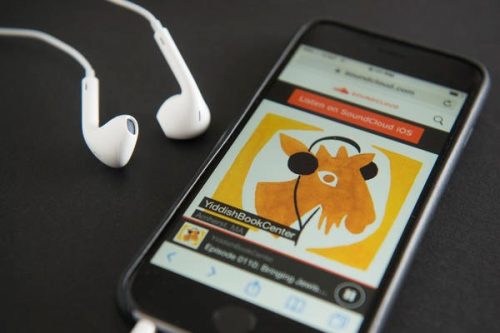
I also listened to episode 0219: Considering Jewish Children’s Literature, which featured Meredith Lewis, who works for the PJ Library, a non-profit aiming to provide Jewish and interfaith children with free books and music related to Judaism to enrich their Jewish education. The recording of this episode took place during Tent: Children’s Literature, the Center’s week-long retreat for writers and author-illustrators of books for children. Already, we can see a strong connection between the podcast and the values of the Yiddish Book Center, including the celebration and preservation of Jewish identity, and youth education. This is an opportunity to hear from a person passionate about this topic in an open conversation in what it means to distribute Jewish related literature and books, and what it means to raise Jewish children in 2019. The Yiddish Book Center has their own vast library of Children’s Literature, so this conversation fits well with their mission, but is not something that would have been able to occur without the podcast medium. A conversation like this would historically only happen at a lecture or a conference, which would take place at the institution. Turning this conversation into a podcast, however, makes it much more accessible to people regardless of schedule, location, or affiliation with the institution.
The Schmooze podcast serves as a great example of how podcasts are a great medium for museum enhancement. It gives the opportunity for museum professionals to give a wider audience the ability to learn more deeply about the holdings of their institution, as well as showcase the people who are working to further scholarship in Yiddish studies. Hannah Hethmon, in her article ‘Podcasting in 2019: An Introduction for Museums’, says that podcasts benefit museums in three ways: organic reach, intimacy, and a dedicated audience. Podcasts are a direct line of contact between the audience and the museum staff, and allows for a more diverse range of topics, by the fact that it is published weekly or bi-weekly, much more often than exhibits rotate. They also allow for the space to discuss topics brought up in exhibits, but that perhaps cannot be fully explored in that setting, and allow for the opportunity to hear conversations with experts on their field of study, diving deeper into topics that followers of that museums or institution are familiar with or would be interested in.
Hethmon states that podcast listeners are hungry for new and complex information, more than they can get from a Wikipedia article or a Twitter feed. Museums are the perfect institutions to fill this knowledge gap. Museums are institutions filled with vast knowledge, and stories about real people, which are often complicated and interconnected. Museum professionals have the task of telling these stories in a way that is digestible and accessible to the public. Podcasts are just another way for museums to accomplish this goal. After all, what is the point of having a museum full of history if not for people to hear, learn, and grow from this information? The important part of museums is the stories and lessons that they hold, not the buildings they exist in. Podcasts can be supported and made stronger by blogposts, and in-person programming, which also help to boost museum engagement.
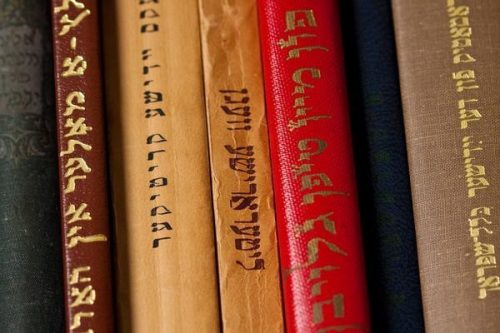
The Schmooze podcast worked in engaging me. As someone who doesn’t live near The Yiddish Book Center’s campus in Amherst, Massachusetts, this podcast allowed me to connect with the center and learn about their collection as well as the preservation and scholarly work they are doing. After listening a few episodes, I took the opportunity to explore the Book Center’s website, and stumbled upon the many resources they have to offer, including their digital Yiddish library, their collection of Oral Histories, and their Yiddish language learning resources, which I am definitely going to utilize. I am now subscribed to the podcast and look forward to listening to their new episodes while I work out or clean my apartment.
